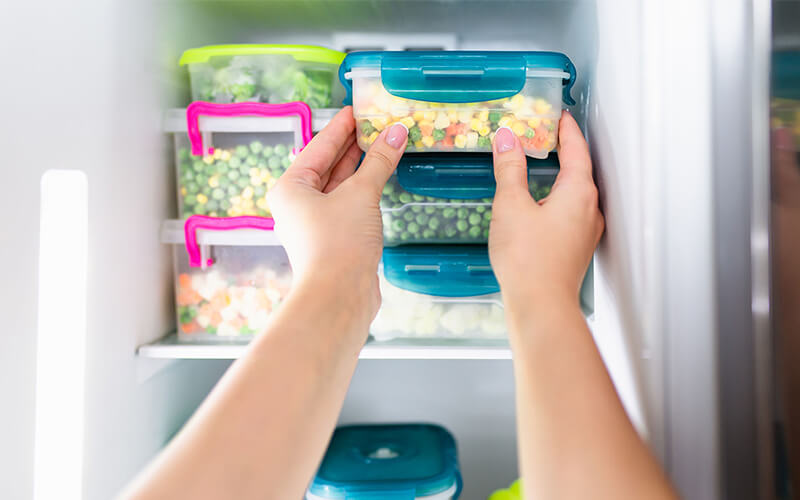Whether you have a chest or upright freezer, the principles of successful freezing are the same. If you’re batch cooking this week, here’s everything you need to know from labelling tips to the defrosting process.

1. Cool foods before you freeze them. Freezing food when hot will only increase the temperature of the freezer and could cause other foods to start defrosting.
2. Only refreeze food if you’re cooking it in between. When food is thawed bacteria can mulitply quickly, particularly at room temperature. If you pop it in the freezer, the bacteria survives and are more likely to reach harmful levels on second thawing. However, if you cook the food in between eg thawing beef mince, using it to make a bolognese and then refreezing, it’s not a problem as the bacteria will have been killed off in the cooking process.
3. A full freezer is more economical to run as the cold air doesn’t need to circulate as much, so less power is needed. If you have lots of space free, half-fill plastic bottles with water and use them to fill gaps. Alternatively, fill the freezer with everyday items you’re bound to use, such as sliced bread or frozen peas.
4. It’s a wrap.Make sure you wrap foods properly or put them in sealed containers, otherwise your food may get freezer-burn.
5. Portion control.Freeze food in realistically sized portions. You don’t want to have to defrost a stew big enough to feed eight when you’re only feeding a family of three.
6. If in doubt, throw it out.Contrary to what many people think, freezing doesn’t kill bacteria. If you are unsure of how long something has been frozen or are a bit wary of something once defrosted, don’t take any chances.
7. Stay fresh.You get out what you put in as freezing certainly won’t improve the quality of your food. Don’t freeze old food because you don’t want to waste it; the point of freezing is to keep food at its prime.
8. Friendly labels. It may seem a bother at the time, but unless you label you might not remember what it is, let alone when it was frozen. Buy a blue marker for raw foods and a red marker for cooked foods. You don’t have to write an essay, just label the food clearly. You can use big-lettered abbreviations, for example a big red B means cooked beef or a blue F means raw fish. And always add the date it was frozen.
9. Defrosting is a must.An icy freezer is an inefficient one, so make sure you defrost your freezer if ice builds up. Don’t worry about the food; most things will remain frozen in the fridge for a couple of hours while the freezer defrosts.
10. In an emergency…If there has been a power cut or you think the freezer has been turned off at some point, don’t open the door. Foods should remain frozen in the freezer for about 24 hours, leaving you time to get to the bottom of the problem.
For batch-cooking recipes that can be frozen, check out these simple recipes.
This article was originally written by Caroline Hire for BBC Good Food.
